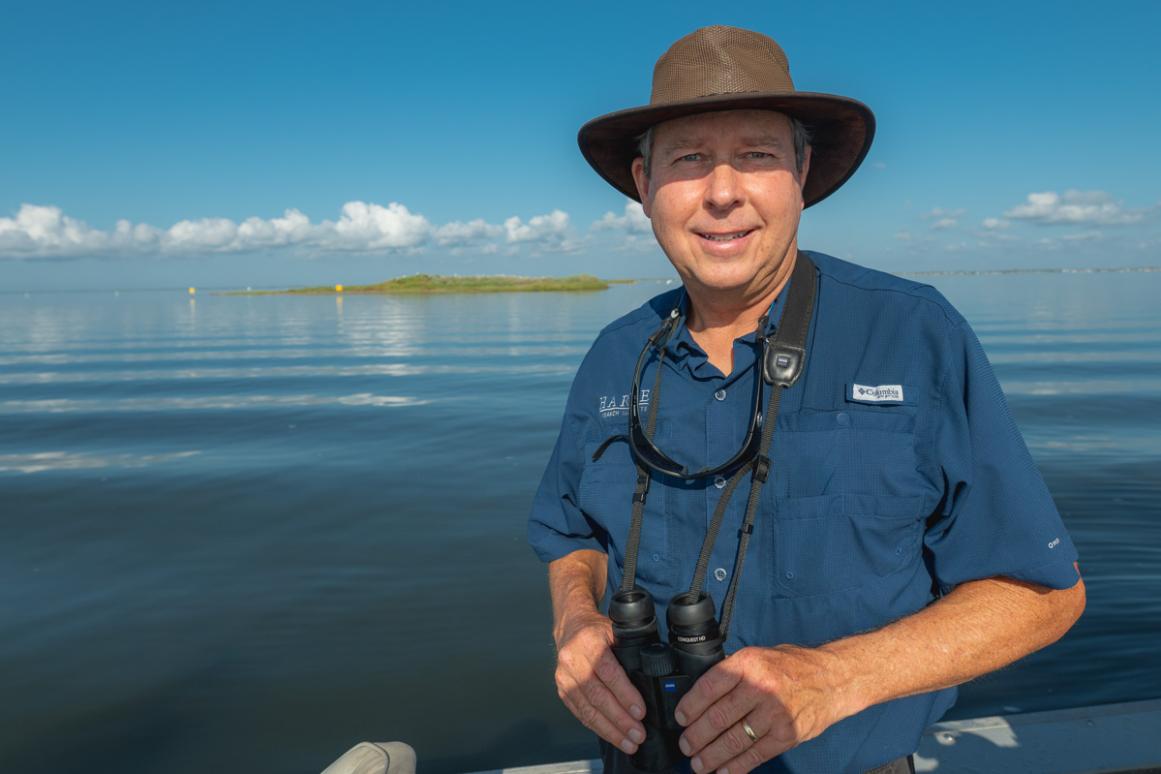For the Birds: Avian Ecologist Dr. Dale Gawlik Brings Everglades Conservation Experience to ‘Birdiest’ City

CORPUS CHRISTI, TEXAS - It’s no secret we love our birds in South Texas. Corpus Christi has been known as “America’s Birdiest City” for more than a decade. These birds live in a coastal environment shaped by humans — fishing boats zip past mangroves full of roosting herons, waterfowl nest on islands created by the dredging of ship channels, and our beaches are crowded with happy vacationers racing into the water alongside wading birds.
Dr. Dale Gawlik is an avian ecologist leading the new Conservation and Biodiversity Lab at the Harte Research Institute for Gulf of Mexico Studies (HRI) at Texas A&M University-Corpus Christi, where he studies the interplay between birds and people.
“When you’re out somewhere like the Padre Island National Seashore, it’s such a wild, desolate place that you feel like you’re in the wilderness, but there’s still so much evidence of past human use. It’s just a reminder that there are really no places left on Earth untouched by humans,” Gawlik said. “But the good news is that birds are resilient. Some are in trouble, but many of them are figuring out ways to survive in this new environment.”
Gawlik received his Ph.D. from Texas A&M University and has since focused his career on applied natural resource management and conservation work. After graduation, he took a position as a senior research scientist with the South Florida Water Management District, creating a restoration plan for the Everglades. There, he also developed state-of-the-art management tools to determine how the movement of water through the sensitive habitat would affect bird populations. Later, he went to Florida Atlantic University, attaining the rank of professor and director of their environmental sciences program. Attracting a team of students who were also interested in applied conservation, they built models to predict outcomes for bird species under different restoration scenarios.
“I’ve always tried to study things that would make a difference,” Gawlik said. “So many species are in trouble already. I’ve never felt I had the right to research questions that aren’t leading to benefits for these birds. I want natural resource managers to use my research to make decisions on the ground.”
Gawlik, who joined the TAMU-CC campus in January 2021, said he decided to begin the next phase of his career at HRI because, in his experience in the natural resource management and restoration world, it took teams of people from across disciplines to build successful projects. HRI’s model puts people from across the academic spectrum together — specialists in ecology, chemistry, geosciences, policy, and socioeconomics — to facilitate interdisciplinary research to solve problems.
In these early months at HRI, Gawlik has been on what he calls a “listening tour” across the bird world of coastal Texas, asking natural resource managers about their biggest management challenges. Some things have come up repeatedly, including an issue on waterbird nesting. Waterbirds in Texas tend to nest on islands, some of them manmade, like the abundant islands that dot the coast. These islands are created by dredge spoil pulled from canals cut for shipping and oil and gas production. They are attractive to birds because they’re close to feeding grounds, but they are feeling the impacts of erosion from storms and sea level rise. Also, they are often found along boating channels, making nesting birds vulnerable to human disruptions and contaminants from oil or chemical spills.
Gawlik and colleagues have a new project they hope to get off the ground called the Colony Island Network Design and Implementation (CINDI), a decision tool to help managers decide which of the islands have the most potential to benefit waterbirds and are therefore the highest priority, so natural resource managers can make the best decisions about which habitats should be preserved and restored. Happier birds make for a healthier ecosystem, and a better coast for the humans that love them.
“One great thing I’ve noticed so far is that people in South Texas have a fairly sophisticated understanding of how unusually good this place is for birds, and just how special that is,” Gawlik said.
